Ai
No Needles, No Pain! India Unveils Its First AI-Powered Blood Test with Just a Face Scan

In a world-first for India, scientists and startups have introduced a futuristic blood testing method that completely eliminates the need for needles. You can now get a detailed health check-up by simply looking into a camera — no pain, no fear, no blood.
This new system is designed to make diagnostics quicker, more accessible, and completely non-invasive, marking a major milestone in healthcare technology.
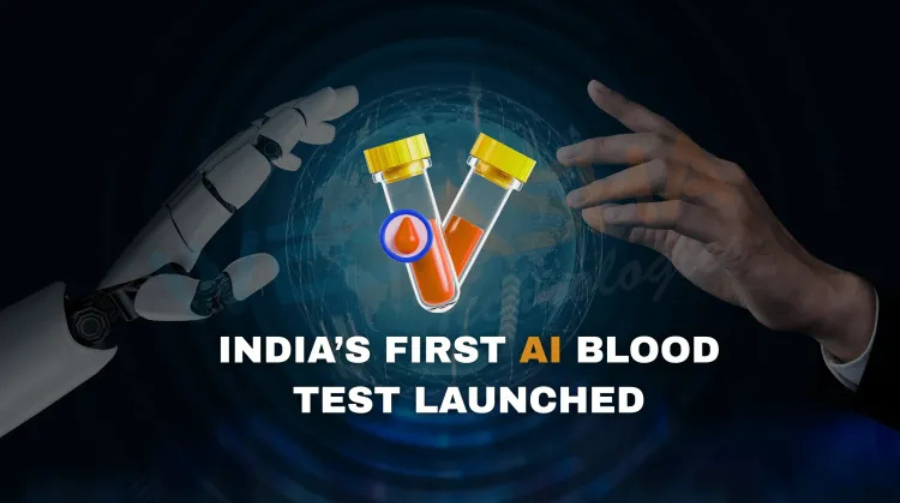
How Does It Work?
The technology combines artificial intelligence (AI), computer vision, and advanced algorithms to analyze your facial features.
Here’s how it works in simple steps:
- You sit in front of a camera and look at it steadily for 30 to 60 seconds.
- The AI scans your facial micro-expressions, blood flow patterns, and subtle skin color changes.
- The system uses huge datasets from previous clinical studies to predict various blood and health markers.
This type of “video-based vital signs monitoring” has been in research globally, but India’s launch is among the first to reach a public pilot stage.

The Science Behind Face-Based Diagnostics
Our skin, especially on the face, reflects a lot of information about our internal health.
- Microvascular changes: Subtle changes in blood vessels under the skin indicate blood circulation quality.
- Skin color variations: Changes in skin tone can signal oxygen levels, anemia, or blood sugar fluctuations.
- Facial thermal patterns: Useful for detecting fever and inflammation markers.
When these are combined with AI’s data-processing power, they can replicate the information you’d normally get from a blood sample.

What Health Markers Can It Detect?
As of now, this AI-based scan can estimate:
- Blood glucose (sugar) levels
- Hemoglobin (anemia risk)
- Oxygen saturation (SpO2)
- Blood pressure and pulse rate
- Cholesterol trends
- Signs of dehydration
Future updates may allow detection of more complex markers like thyroid hormone levels, vitamin deficiencies, and infection indicators.
Who Is Behind This Innovation?
This breakthrough comes from a collaboration between:
- A Bengaluru-based AI health-tech startup
- Top-tier Indian research institutes
- Medical universities specializing in non-invasive diagnostics
The project has been in development for over five years and has involved testing with thousands of patient data points to improve accuracy.
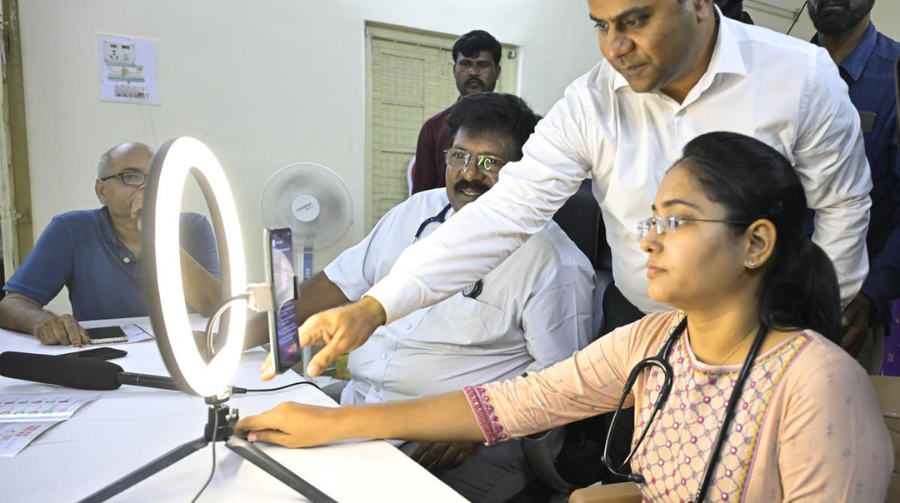
How Accurate and Reliable Is It?
Preliminary studies show high accuracy, with over 85% correlation to traditional blood tests for common markers like glucose and hemoglobin.
However, experts emphasize that it should be used as a screening tool, not a complete replacement for lab blood tests — at least for now.
Impact on India’s Healthcare System
India faces a unique healthcare crisis:
- Huge patient-to-doctor ratio
- Limited diagnostic facilities in rural areas
- High levels of diabetes, hypertension, and heart disease
This new technology could:
- Enable mass community screenings in villages and remote towns
- Reduce the burden on diagnostic labs and hospitals
- Empower people to monitor their health more frequently at home or in local clinics
- Encourage preventive healthcare instead of reactive treatment
Global Potential and Future Use Cases
Globally, non-invasive health monitoring is an emerging trend. Countries like the US, Japan, and China are exploring similar technologies but are still largely in lab stages.
India’s move to pilot it publicly puts the country on the global innovation map and could lead to:
- Partnerships with wearable tech companies
- Integration into smartphones and telehealth apps
- Possible export of this technology to other countries
H2: Expert Opinions and Public Reaction
Expert Views
Medical experts are cautiously optimistic. Dr. Anil Kapoor, a preventive medicine specialist, says: This technology has the potential to transform how we do mass health screening. But it should be regulated and validated continuously
Public Reaction
On social media, excitement is off the charts. Comments like:
- “Finally, no more fear of needles!”
- “I want this in my village clinic!”
- “Technology that truly saves lives.”
The younger generation, who are already comfortable with tech and face recognition, see this as a big win for the future of health monitoring.
Possible Limitations and Challenges
Despite its promise, some challenges remain:
- May not fully replace traditional blood tests for complex diagnostics
- Needs stable lighting and camera quality for accurate readings
- Privacy and data security concerns
- Potential initial high costs for advanced AI systems
The government and developers are working to address these through guidelines and phased rollouts.
What’s Next for Non-Invasive Health Tech?
The future roadmap includes:
- Expanded biomarker detection (vitamin D, thyroid, liver function)
- Home-based devices or mobile app integrations
- AI updates using ongoing data to improve accuracy
- Lowering costs to make it accessible to rural and low-income communities
If successful, India might soon lead the global movement toward completely needle-free, painless, and democratized healthcare.
Ai
Realme GT 8 Pro & Dream Edition India Launch: Specs, Price & Offers
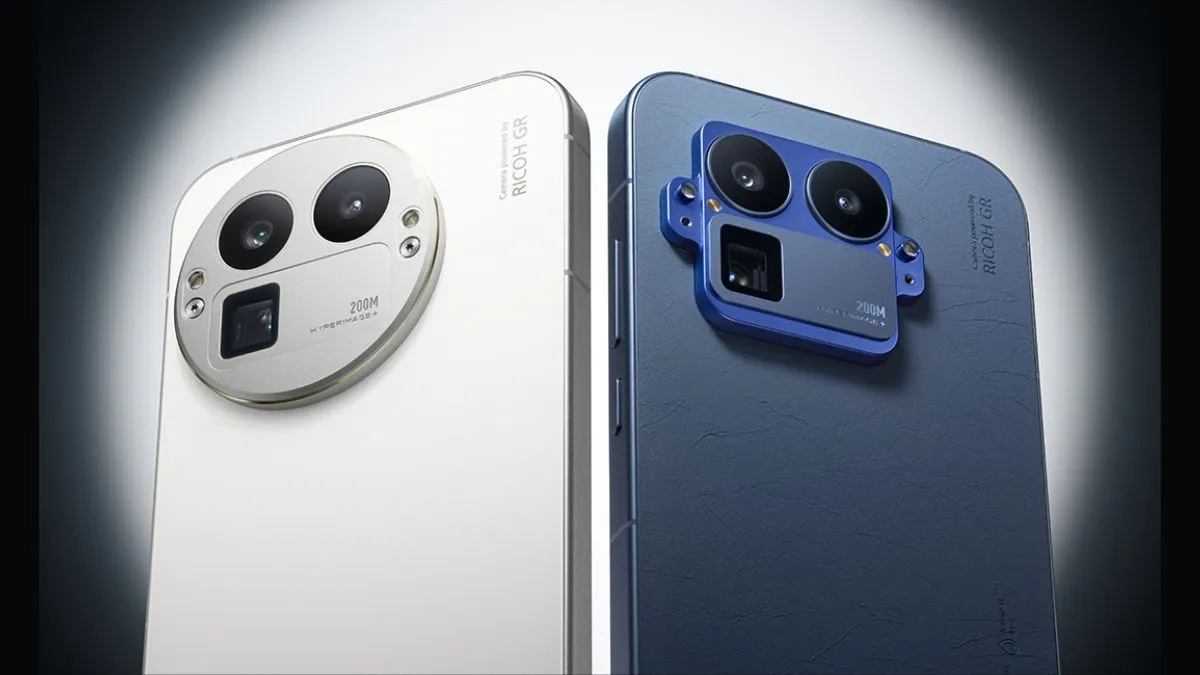
Realme GT 8 Pro and GT 8 Pro Dream Edition Launch in India Starting at Rs 67,999
Image Source: Realme
Written By: Saumya Nigam @snigam04
Published: November 26, 2025 11:17 IST
New Delhi:
Realme has officially launched its flagship smartphones, the Realme GT 8 Pro and Realme GT 8 Pro Dream Edition, in India. The first sale began on November 25, 2025, and the devices are available on realme.com, Flipkart, and major retail stores nationwide.
Realme GT 8 Pro Price and Offers
Available Offers on realme.com and Flipkart:
- GT 8 Pro (12GB RAM + 256GB storage): Rs 72,999
- With bank offers + EMI + Deco Set Gift: Rs 67,999
- GT 8 Pro (16GB RAM + 512GB storage): Rs 78,999
- With bank offers + EMI + Deco Set Gift: Rs 73,999
- GT 8 Pro Dream Edition (16GB RAM + 512GB storage): Rs 79,999
- Up to 12-month no-cost EMI: Rs 79,999
Flagship Display and Immersive Experience
The Realme GT 8 Pro features an industry-first 2K 144Hz HyperGlow Display with a peak brightness of 7000 nits, ensuring excellent visibility even under bright sunlight.
Other premium features include:
- Symmetric Master Acoustic Speaker
- Ultra Haptic Motor
- 7K Ultimate VC Cooling System
Together, these components deliver a rich multimedia and gaming experience.
First-Ever RICOH GR Camera System
A standout feature of the GT 8 Pro is its industry-first RICOH GR Camera System, developed in collaboration with RICOH GR over four years. Key specifications:
- 200MP Ultra Clarity Telephoto camera
- GR focal lengths: 28mm and 40mm
- GR Film Tones
- Snap Focus for instant street photography
This brings a professional-grade, street-photography experience to smartphone users.
Massive 7000mAh Battery with Ultra-Fast Charging
The GT 8 Pro is powered by a 7000mAh Titan Battery, supporting:
- 120W Ultra Charge
- 50W Wireless Charging
Realme claims over 20 hours of video playback and up to 8.4 hours of continuous gaming, making it ideal for heavy users.
World’s First Switchable Camera Bump
Realme introduces the Switchable Camera Bump, allowing users to customize the camera island design between round, square, or themed styles.
The GT 8 Pro comes in Diary White and Urban Blue, built using sustainable recycled materials.
GT 8 Pro Dream Edition
The GT 8 Pro Dream Edition, developed in partnership with the Aston Martin Aramco F1 Team, brings exclusive design elements:
- Aston Martin Racing Green finish
- Lime Essence detailing
- Central silver Aston Martin emblem
- Exclusive F1-inspired UI
This special edition offers a premium, motorsport-inspired aesthetic alongside flagship performance.
Ai
Adobe Adds Gemini 3 Nano Banana Pro AI to Photoshop and Firefly
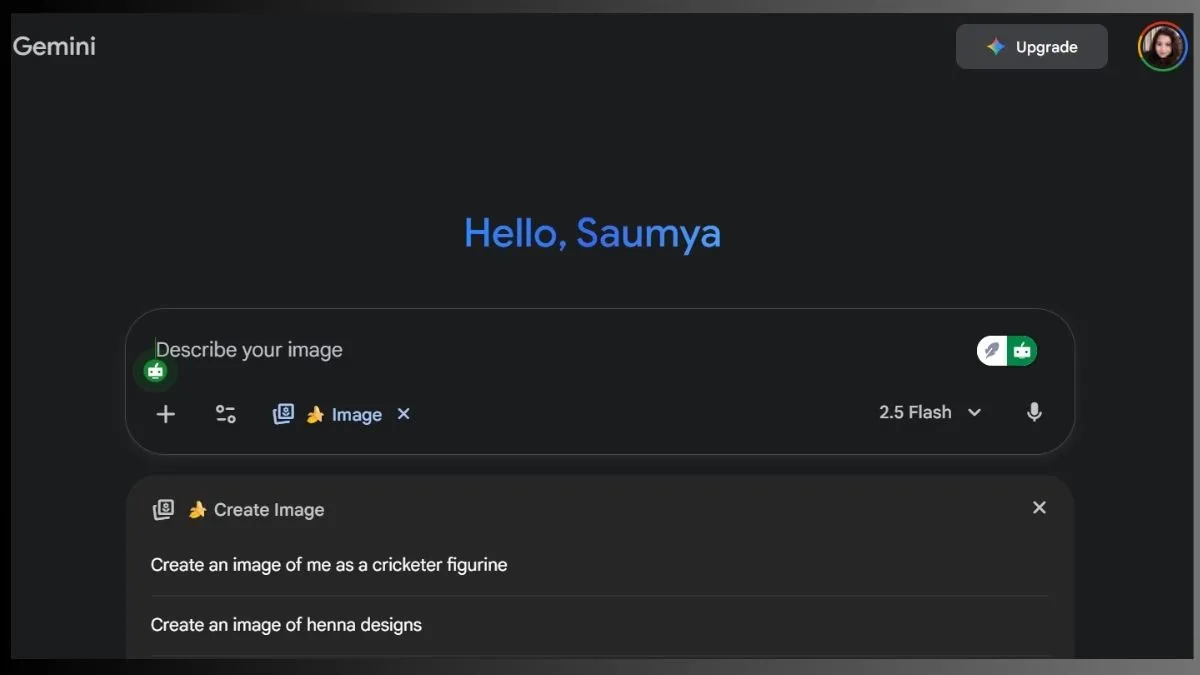
Adobe integrates Gemini 3-powered Nano Banana Pro AI model into Photoshop and Firefly
Adobe has introduced Google’s new Gemini 3-powered Nano Banana Pro AI model to both Photoshop and the Firefly app, bringing upgraded image generation, improved editing capabilities, and unlimited AI image creation for subscribers until December 1.
Swift rollout following Adobe–Google partnership
The announcement came through an official Adobe press release, highlighting the remarkably fast turnaround — arriving less than two weeks after the companies revealed their expanded strategic partnership. Under this collaboration, Adobe users gain access to Google’s frontier AI models across key creative apps including Photoshop, Illustrator, Premiere Pro, and Firefly.
Adobe also confirmed that Creative Cloud Pro and Firefly subscribers will enjoy unlimited AI image generation until December 1. This applies not only to Firefly’s native models but also to select third-party AI engines.
Nano Banana Pro debuts in Firefly
Within the Firefly app, users can now choose the Nano Banana Pro model through the text-to-image tool. Firefly Boards — Adobe’s collaborative mood-boarding platform — also supports the model, enabling creators to:
- Upload up to six reference images
- Combine and refine visuals using prompts
- Develop concepts collaboratively with AI-assisted workflows
These additions significantly enhance creative control and customization within Firefly.
Enhanced Generative Fill in Photoshop
Photoshop users will also benefit from the integration, as the Gemini 3-powered model strengthens the widely used Generative Fill feature. With the update, creators can:
- Generate high-resolution images up to 4K
- Perform advanced text-based edits
- Modify lighting, style, or composition
- Produce multiple variations of existing visuals
Nano Banana Pro now becomes the third partner AI model available in Photoshop, joining the original Nano Banana and Black Forest Labs’ FLUX.1 Kontext [pro].
A major boost to Adobe’s AI ecosystem
This integration marks another step in Adobe’s push to expand its AI-driven creative ecosystem. By incorporating Google’s latest model, Adobe equips creators with greater flexibility, faster workflows, and more powerful generative tools. As AI-assisted design accelerates, the Adobe–Google partnership strengthens Photoshop and Firefly’s competitive edge across both desktop and mobile platforms.
Ai
Dhwajarohan at Ram Mandir: Yogi Adityanath Calls It a New Era

Dhwajarohan at Ram Mandir Marks Beginning of a New Era: Yogi Adityanath Speaks
New Delhi:
Uttar Pradesh Chief Minister Yogi Adityanath addressed the gathering at the Dhwajarohan ceremony at the Ram Mandir on Tuesday, November 25. The occasion saw Prime Minister Narendra Modi and RSS chief Mohan Bhagwat hoist the saffron flag atop the temple’s shikhar on Vivah Panchami, marking a significant milestone in India’s socio-cultural and spiritual journey.
Speaking at the ceremony, Yogi Adityanath described the event as “the beginning of a new era.” He said,
“Flag hoisting at the grand temple of Bhagwan Ram in Shri Ayodhya Dham is not the ‘Poornaahuti’ of a Yagya but the start of a new chapter. I thank PM Modi on this occasion on behalf of Ram devotees.”
The UP CM dedicated the day to the revered saints, warriors, and devotees of Lord Ram who had devoted their lives to the temple movement. He added,
“Faith did not bow down and did not stop. When the RSS gained power, one fearless voice rose: ‘Ram Lalla Hum Aayenge, Mandir Wahi Banaenge,’ ‘Lathi Goli Khaenge, Mandir Wahi Banaenge.'”
Yogi Adityanath also congratulated the Karma yogis who sacrificed their lives for the temple.
“This grand temple is a symbol of the faith and self-respect of 140 crore Indians. This flag is proof that the light of Dharma is eternal and the principles of Ram Rajya are timeless. When PM Modi became Prime Minister in 2014, the faith of crores of Indians found expression in this grand temple. This saffron flag represents Dharma, integrity, truth, justice, and Rashtra Dharma.”
The flag-hoisting ceremony symbolizes both the completion of the temple’s construction and the ushering in of a new chapter of cultural celebration and national unity. The saffron flag, a right-angled triangular banner measuring 10 feet in height and 20 feet in length, features a radiant sun representing Lord Ram’s brilliance and valor, the sacred Kovidara tree, and the Om symbol. Crafted from parachute fabric with silk threads, the flag embodies dignity, unity, cultural continuity, and the ideals of Ram Rajya.
Mounted on a 42-foot-high pole atop the 161-foot Shikhar, the flag is inspired by descriptions in the Valmiki Ramayana. Its triangular design represents the divinity, strength, and eternal spirit of Lord Ram.
-

 Celebrity Lifestyle7 months ago
Celebrity Lifestyle7 months agoEx-Cricketer Shikhar Dhawan Buys Ultra-Luxury Apartment Worth ₹69 Crore in Gurugram
-

 Crime & Investigation5 months ago
Crime & Investigation5 months agoDelhi Police SI Neetu Bisht Caught Taking ₹20 Lakh Bribe – Shocking Details Emerge in Corruption Probe
-
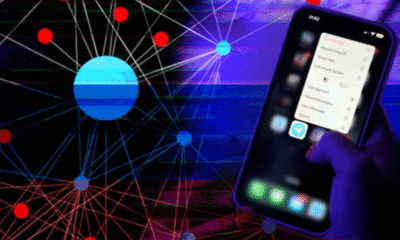
 Glamour & Entertainment6 months ago
Glamour & Entertainment6 months agoTelegram Channels Disseminating Pro‑Russian Propaganda in Poland
-

 Entertainment6 months ago
Entertainment6 months agoAbhijeet & Dr Tarika Reunite in CID 2 — Fans Say ‘Clear the Misunderstanding Now
-

 Business6 months ago
Business6 months agoAmazon sets 30‑day relocation deadline for corporate staff—opt out by resigning in 60 days
-

 Bollywood4 months ago
Bollywood4 months agoNo ₹3 Lakh Fine or 2-Year Jail: The Truth Behind the ‘Hakla’ GIF Buzz
-

 Celebrity Lifestyle6 months ago
Celebrity Lifestyle6 months agoMaha Kumbh Girl Monalisa seen in car allegedly worth ₹1 crore
-

 Education6 months ago
Education6 months agoNEET UG Controversy Explained: Paper Leak, Impersonations & Ongoing Probe




